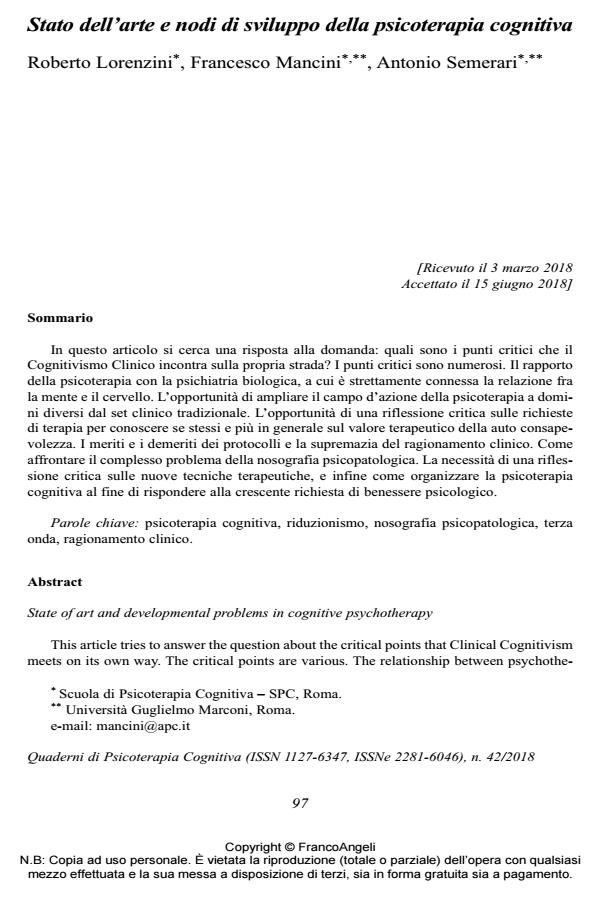State of art and developmental problems in cognitive psychotherapy
Journal title QUADERNI DI PSICOTERAPIA COGNITIVA
Author/s Roberto Lorenzini, Francesco Mancini, Antonio Semerari
Publishing Year 2018 Issue 2018/42
Language Italian Pages 15 P. 97-111 File size 107 KB
DOI 10.3280/QPC2018-042007
DOI is like a bar code for intellectual property: to have more infomation
click here
Below, you can see the article first page
If you want to buy this article in PDF format, you can do it, following the instructions to buy download credits

FrancoAngeli is member of Publishers International Linking Association, Inc (PILA), a not-for-profit association which run the CrossRef service enabling links to and from online scholarly content.
This article tries to answer the question about the critical points that Clinical Cognitivism meets on its own way. The critical points are various. The relationship between psychothe-rapy and biological psychiatry, that is closely linked to the relationship between mind and brain. The opportunity to extend the psychotherapy action field to different domains from the traditional ones. The opportunity to critically reflect on therapy to know oneself and more generally on self-awareness therapeutic value. The advantages and disadvantages of protocols and the supremacy of clinical reasoning. How to deal with the complex problem of psychopathological nosography. The need to critically reflect on new therapeutic techniques, and at the end the way to organize cognitive psychotherapy in order to respond to the increasing request for psychological well-being.
Keywords: Cognitive psychotherapy, reductionism, psychopathological nosography, third wave, clinical reasoning
Roberto Lorenzini, Francesco Mancini, Antonio Semerari, Stato dell’arte e nodi di sviluppo della psicoterapia cognitiva in "QUADERNI DI PSICOTERAPIA COGNITIVA" 42/2018, pp 97-111, DOI: 10.3280/QPC2018-042007